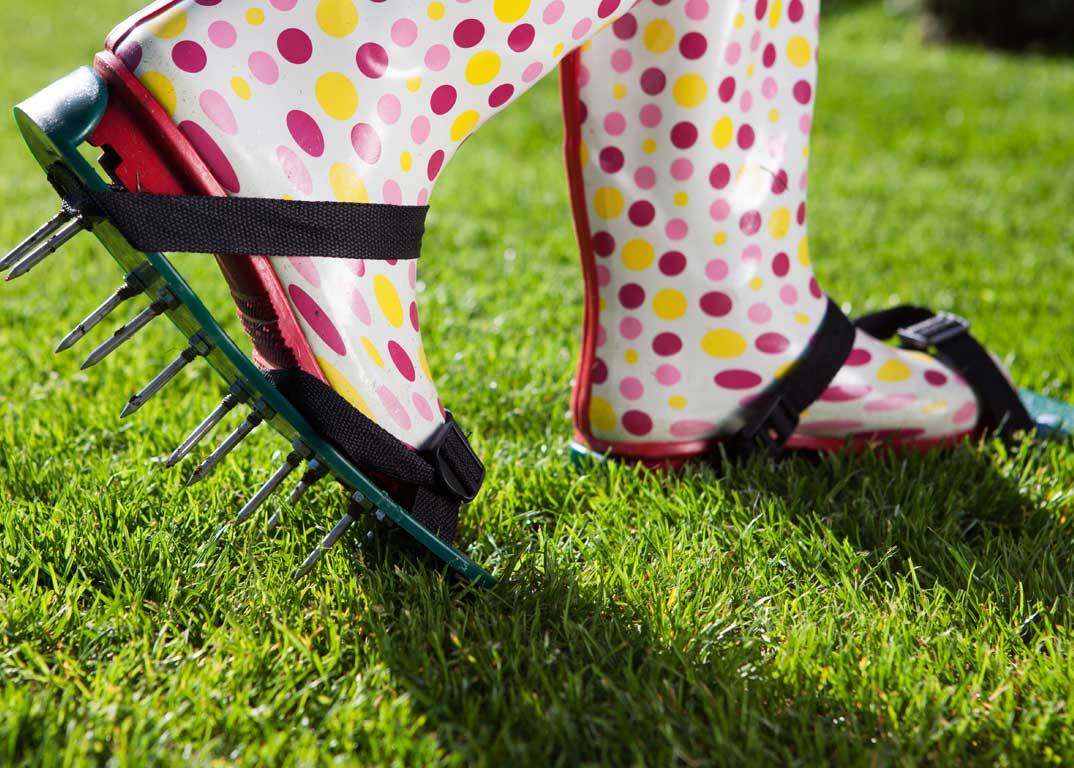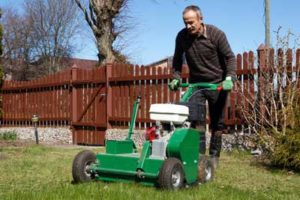
Lawn Aeration Is an Important But Overlooked Practice
Maintaining a great looking lawn relies on four core principles: mowing, feeding, weeding, and aerating. Yes, there are a few things in between but if you can keep a solid grasp on the core concepts, everything else will feel like a breeze. Aerating, however, tends to be the “odd duckling” as it’s something that isn’t so obvious as the other three.
What Is Lawn Aeration?
Lawn aeration is the process of perforating the soil with small holes to allow air, water, and nutrients to penetrate the grass and reach its roots. Aeration helps the roots to produce a stronger and more vigorous lawn. The main reason for aerating is to alleviate soil compaction over time as compacted soil prevents the proper circulation of air, water, and nutrients within the soil from occurring.
Do I Need to Aerate My Lawn?
Short answer: Yes, lawn aeration is extremely important. While it may not need to be something as routine as mowing your lawn, aerating your lawn helps prevent the build-up of lawn thatch. Topsoil of newly constructed lawns can often get buried and the grass that has since been established was compacted by the construction traffic. If you have grassy areas that are subject to a lot of foot traffic, you may want to consider aerating that particular section first and foremost. If your lawn dries out easily and/or has a spongy feel, your lawn possibly has a thatch problem. The good news is that you can take a rake and rake up what’s on the surface, but you may want to take a shovel and remove a four-inch sample of lawn to examine if the layer of thatch is greater than one-half inch. If it is, aeration is recommended.
The Best Way to Aerate Your Lawn
 So, now that you have determined your lawn needs to be aerated, what’s next? Well, you can start by thoroughly watering the law one or two days prior to the aeration taking place. Applying at least one-inch water will help the aerator penetrate the soil as it pulls out soil cores easily and less painfully to the grass. If you have any sprinkler heads or utility lines that are hidden underground, you will also want to flag them so the aerator operator avoids them. A mechanical core aerator is the best equipment to use when it comes to aeration and can be rented from most garden centers for anywhere between $30 and $75 for a few hours. The machine itself is quite heavy so you want to be sure to exercise extreme caution while moving, maneuvering, and using it, and you may want to ask a friend or nearby neighbor for help.
So, now that you have determined your lawn needs to be aerated, what’s next? Well, you can start by thoroughly watering the law one or two days prior to the aeration taking place. Applying at least one-inch water will help the aerator penetrate the soil as it pulls out soil cores easily and less painfully to the grass. If you have any sprinkler heads or utility lines that are hidden underground, you will also want to flag them so the aerator operator avoids them. A mechanical core aerator is the best equipment to use when it comes to aeration and can be rented from most garden centers for anywhere between $30 and $75 for a few hours. The machine itself is quite heavy so you want to be sure to exercise extreme caution while moving, maneuvering, and using it, and you may want to ask a friend or nearby neighbor for help.
Choosing the Right Time to Aerate Your Lawn
This answer depends on your climate a bit, but the best time of the year to aerate a cool-season grass is anytime between August and October as this is when the grass is breaking its dormancy and begins its period of active growth. If you live in a warmer climate, April through June is the timeframe you will be looking at. If your circumstances and grass allows you to, try to avoid aerating your lawn in the spring. Aerating your grass during the growing season gives the grass the full amount of time it needs to heal and fill in any open areas that are left after the soil plugs are removed. However, if your grass is in dire need and existing grass simply cannot grow, it may be necessary to aerate earlier than anticipated, but you may notice an uprising of weeds soon after.
Taking Advantage of Lawn Aeration
We know lawn aeration may sound foreign to some which is why we wanted to describe the process and detailed as possible. All in all, aeration is one of the best things you can do for your grass and it will thank you by looking as beautiful as ever after it has repaired itself. If you do not feel comfortable using heavy machinery, please, do not stretch yourself outside of your comfort zone and don’t be afraid to ask for professional help.
Otherwise, happy aerating!
